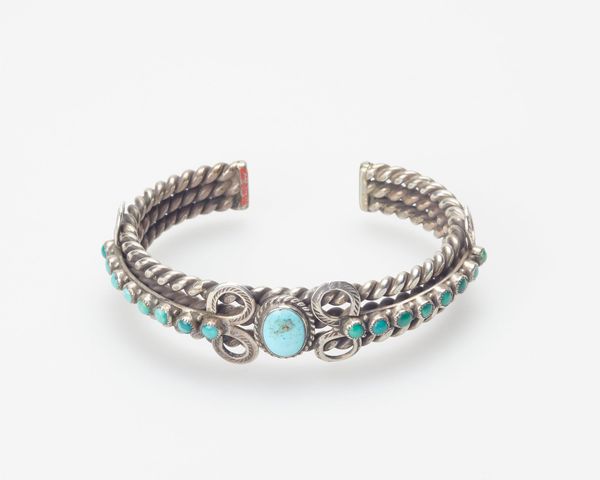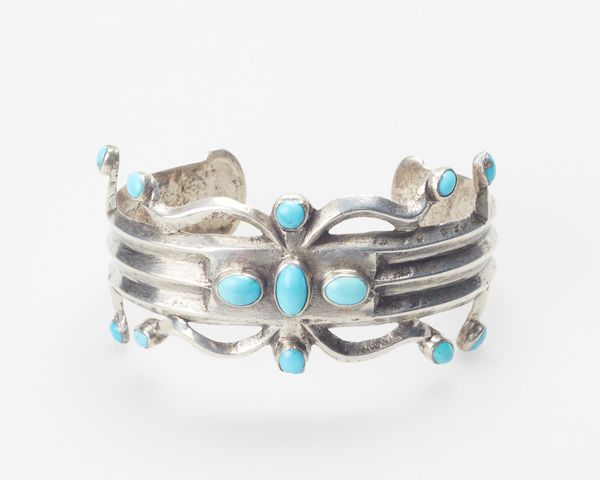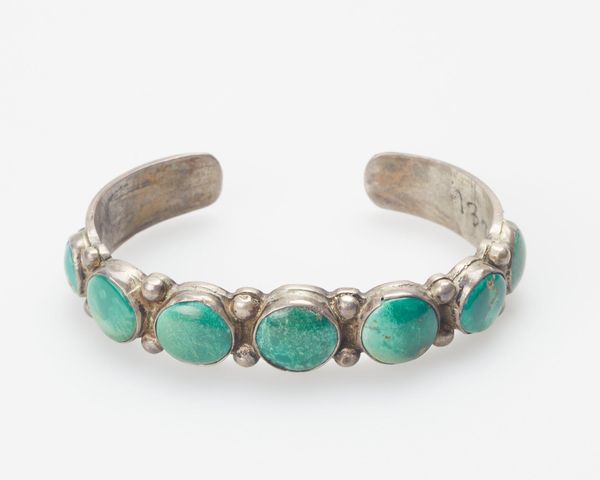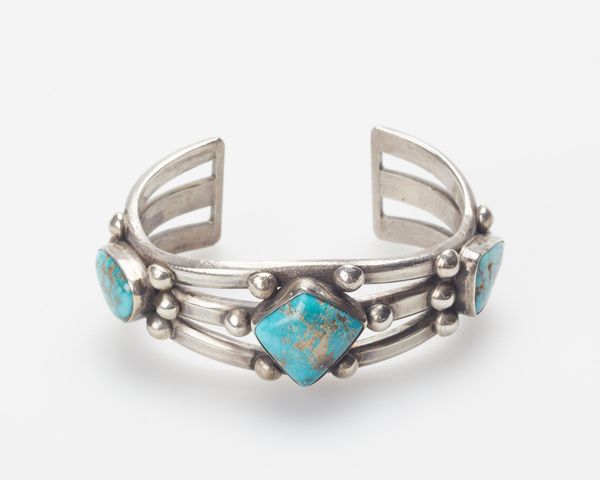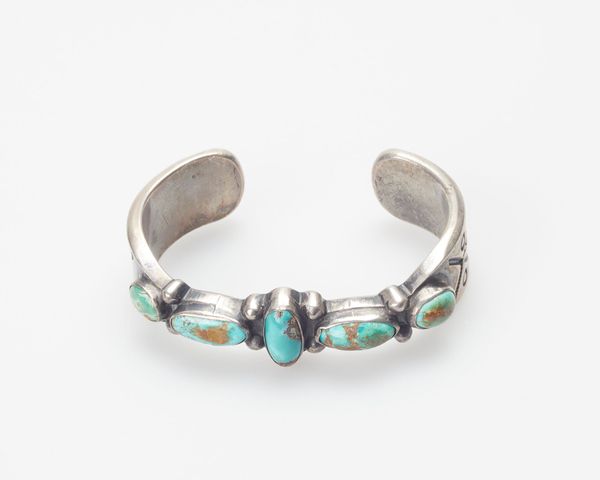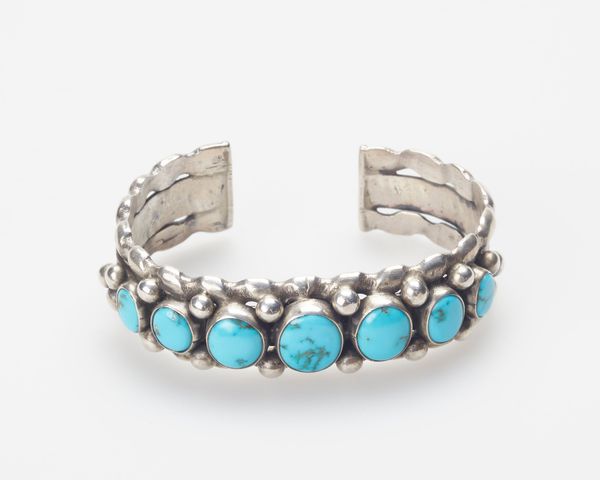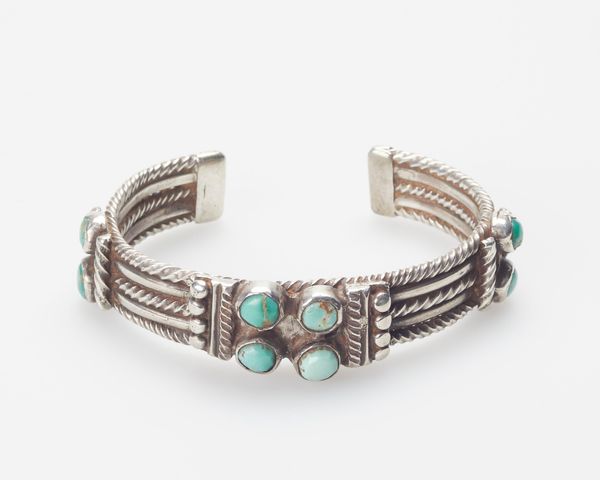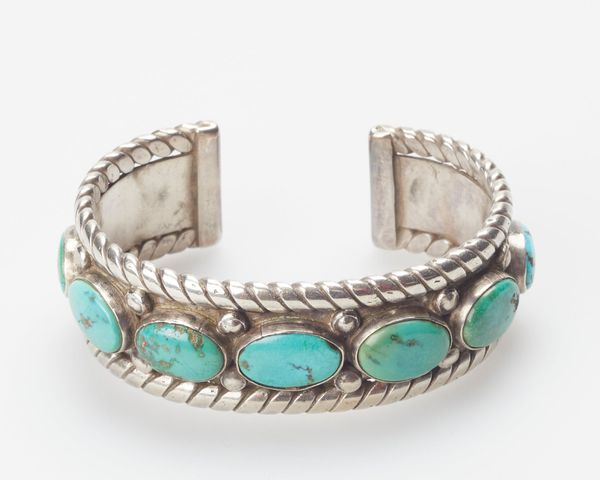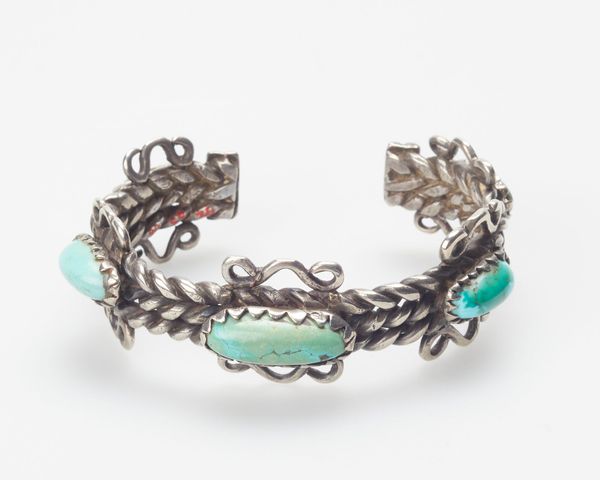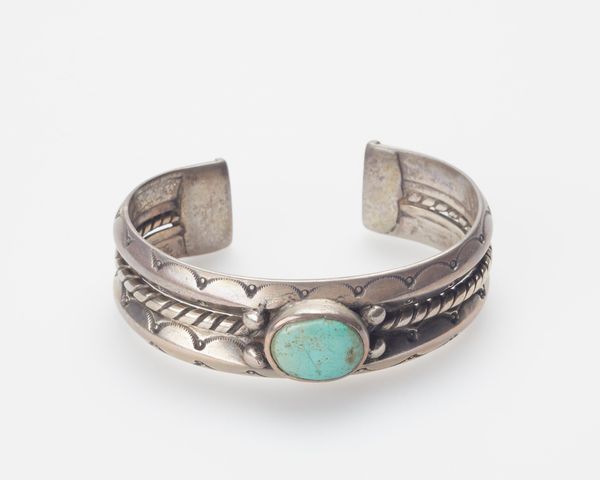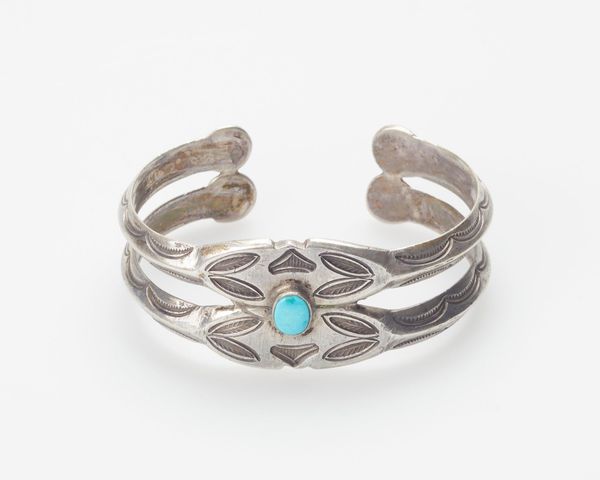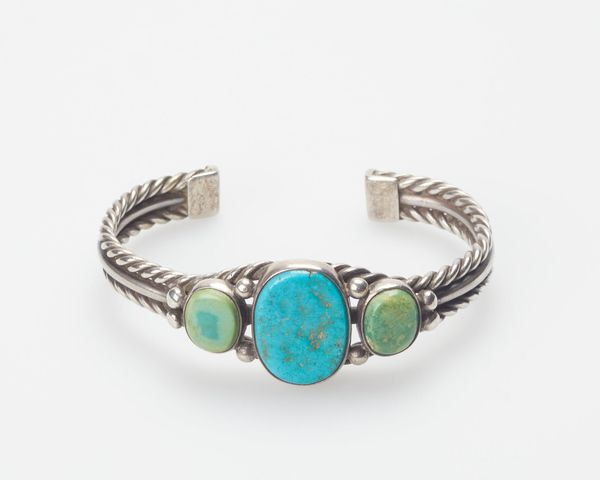
silver, metal
#
silver
#
metal
#
indigenous-americas
Dimensions: 2 1/4 x 15/16 in. (5.72 x 2.4 cm)
Copyright: Public Domain
Curator: Welcome. Before us is a silver bracelet, crafted sometime in the mid-20th century, between the 1940s and 1950s. It's attributed to the Navajo, or Diné people. What strikes you about it? Editor: Immediately, I’m drawn to its delicate nature, but in that fragility I perceive a formidable artistic structure. It’s almost like observing the skeletal framework of something organically grown – but hardened into permanent metal. Curator: Indeed. Note how the silversmith masterfully shapes and organizes linear forms, curls that repeat across the entire band. The symmetry is beautifully executed; the curves balanced and mirrored on either side of the pale turquoise stone set at its center. The rhythm created is remarkably sophisticated. Editor: But to isolate form like this misses the point. The history of Navajo silverwork tells a vital story. This wasn’t simply about adornment. It became entwined with trade, cultural resistance, and adaptation in the face of colonial pressures. These materials—silver, turquoise—took on significance that extends beyond mere aesthetic concerns. Curator: That is undeniable, but the bracelet stands alone as a demonstration of craftsmanship. The execution is remarkably refined for the period, irrespective of cultural significance. Think about the formal elements; the play of light on the sculpted surfaces, the contrast of polished metal and smooth stone, the open space amid solid forms... It demonstrates superb skill. Editor: And we must think about this skill as an act of cultural survival, as it reflects an evolving practice. The Navajo learned silversmithing from Mexican artisans in the 19th century. They took this knowledge and then transformed it, adapting the practice into their unique cultural forms of expression while navigating reservation life and forced assimilation policies. Curator: So, a cross-cultural synthesis evident in its creation. And an elegance of form speaks to the lasting value of the Diné aesthetic principles. Editor: Yes, indeed! Its value as more than a decorative object rests in understanding the lived experience, perseverance and resistance woven within it. It is truly about appreciating its inherent beauty as it stands as evidence to a vibrant culture.
Comments
No comments
Be the first to comment and join the conversation on the ultimate creative platform.
